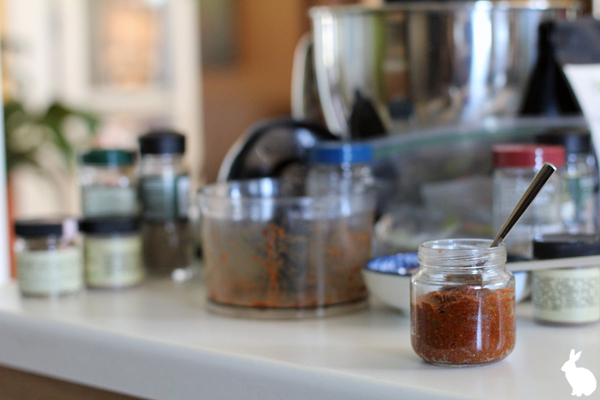It was when I last went looking for our shaker of garlic powder that I was finally motivated to clean out the pantry. After rummaging around for a bit, I discovered it well-hidden in obscurity at the very back of the shelf, its label dusty and faded, its contents distressingly clumpy. Truth be told, that garlic powder had been in my husband’s life longer than I had. Tossing it into the waste bin, I had more fear that its sudden absence would inspire vampire infestation than that I’d miss it in the kitchen. Which is to say, I did not expect my life to change one bit.
Clearly, garlic powder is not a spice rack item I think much about. However, though it’s a seasoning that inspires an eyebrow-raising level of animosity in some quarters, I don’t have any snobbery about using it. I had just kind of forgotten about it. It had slipped out of my life along with those batches of Chex Mix and slices of garlic bread toasted under the broiler that had flavored my childhood.
Having just discovered the “dehydrate” setting on my oven, I figured why not try making a batch of my own? I did the math for this week’s Serious Eats column, but if you don’t care much about that part, know that in the end I had a small jar of powerfully attractive powder. It’ll be much easier to remember to use this stuff.
DIY Garlic Powder
This process also works for onions, and I took the opportunity to do a tray of each simultaneously without damaging the flavor of either. Out of one 13-ounce white onion (chopped fine), I was able to produce 1/2 cup of dried flakes, which reduced to 3 tablespoons of onion powder. It’s a very small amount, but it has a very sweet taste–like a fried onion ring.
Be prepared for your house to fill with the strong scent of garlic during the dehydration period.
2 garlic bulbs (about 5 oz.), cloves separated and peeled
Slice garlic very thinly and spread out in a single layer on a dehydrator tray. Alternatively, you can use drying racks or a parchment-lined baking sheet in your oven (convention setting if you have one) with the door cracked open (I found that an old wine cork works well for this purpose).
Dehydrate at 130°F, stirring and turning slices every few hours until garlic is fully dry. When dehydration is complete, the garlic chips will snap in half rather than bend. This could take nine or more hours, depending on the thickness of your slices and the vagaries of your appliance.
Allow garlic to cool completely and then grind to desired consistency (I use a coffee grinder that I reserve for spices). If you want to make sure that the powder is fairly even and fine, pass the ground garlic through a mesh strainer, catching the larger bits for a second pass through the grinder. Store finished powder in an airtight container in a cool, dark place. Makes approximately 2 oz.




























